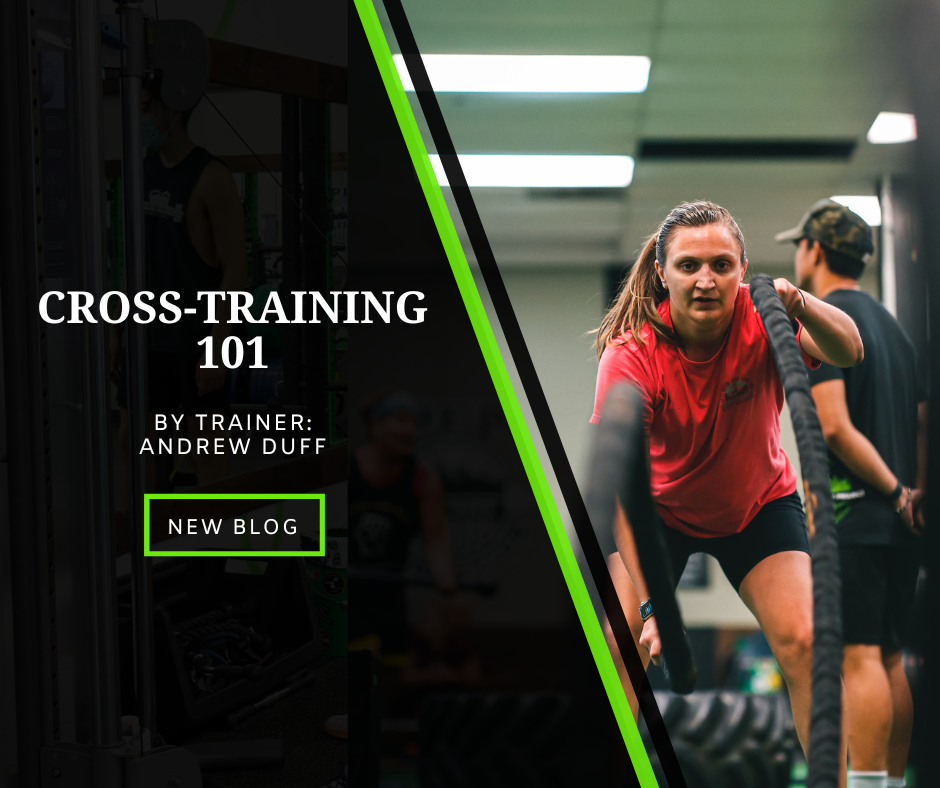CROSS-TRAINING 101
Cross-training refers to the combination of two types of training. This style of training is commonly done by athletes and recreationally active individuals. The benefit of this training style is you get the added adaptations of both training styles you engage in. An example of cross-training would be combining resistance training (i.e., lifting weights, pushing sleds, isometric holds) and a sport (i.e., basketball, rugby, volleyball). This is a great combination to maintain a healthy lifestyle since together they challenge 5 very important health-related components of fitness: body composition management (metabolic health), cardiorespiratory endurance, musculoskeletal strength, musculoskeletal endurance, and balance/flexibility.
Ongoing Health Issues?
Chronic illness is at an all-time high in the US. Nearly half of all adults have an ongoing health condition, with the most prominent being related to cardiovascular and metabolic diseases. It is well known that exercise may decrease one's risk of developing these diseases, so a common question is, what is the best type of exercise to help yourself? The short answer is all of them, and cross-training may be the fit for that!
Recreational sports and activities are great because the enjoyment that people get from them allows them to be motivated to dedicate time to them naturally. Ice skating, hiking, or playing in a rugby league are all great ways to regularly maintain one's metabolic health, cardiorespiratory health, balance, and more. These kinds of activities are wonderful to do and have numerous positive benefits; however, if that is all one does, they may have some “blind spots.” Specifically musculoskeletal strength and endurance.
Muscular Strength
The loss of muscular strength and the decline in the quality of muscular skeletal tissue (ligaments, tendons, bones) can occur in anyone who is sedentary. As we age, it becomes easier to lose those good qualities, even if non-sedentary, which is why it is beneficial to strength training regularly. Even just one day a week, with appropriate exercises, volume, and intensity, can improve muscular strength and endurance. Weight training can also provide positive feedback for those other soft tissues to maintain strength, which is especially important as you age.
But How Much is Too Much?
In order to get the benefits of both cardiovascular exercise and strength training, many engage in cross-training. This is a great endeavor, but there are some factors to consider. When using two training modalities, one has to think about the total volume of training and recovery. While exercise can elicit traits or adaptations in muscles, bones, etc., too much total training can lead to overtraining. Overtraining occurs when training and recovery do not balance. It is easy to understand how this can occur when one is focusing on more than one training goal.
It is worth pointing out that volume and intensity usually have an inverse relationship when training, meaning when the volume is higher, the intensity should be lower. Periodizing which training has higher intensity can help manage your fatigue and prevent overtraining. For example, if you row and lift weights, when the rowing volume is higher intensity, keep lifting at a lower intensity. This is a basic framework for people just looking for health benefits and longevity in their activities. If the focus were on how to use cross-training for athletes, other methods of periodization of intensity and volume would definitely have their place.
Training “Peaks”
Since athletes often require a period of being at a training “peak” and are not solely focused on health, different periodizations are used for cross-training. It is hard to find an elite-level sport anymore that is not strength training in some form, so it is obvious that cross-training is useful to athletes, too. The difference for elite athletes is to peak, there must be a period of “overreaching.” In these overarching periods, volume is usually built up harmoniously with intensity until it becomes time to remove the volume and maintain a high intensity slowly. The overarching allows for athletes to push their limits, and the idea is that removing volume and maintaining intensity causes the athlete to recover and have a “super-compensation”. If you are not an athlete, then there is no need for this process, and it may be better to maintain a balance of total work (volume and intensity) and recovery.
Try It for Yourself!
Cross-training is definitely something people should consider trying. If you already lift weights, consider finding an activity that allows you to express some of that strength and have fun. If you are already recreationally active but don’t lift, consider working a strength routine into your week. The added benefits of strength training and cardiorespiratory training are great, but do make sure you keep your activity level balanced with your recovery!

